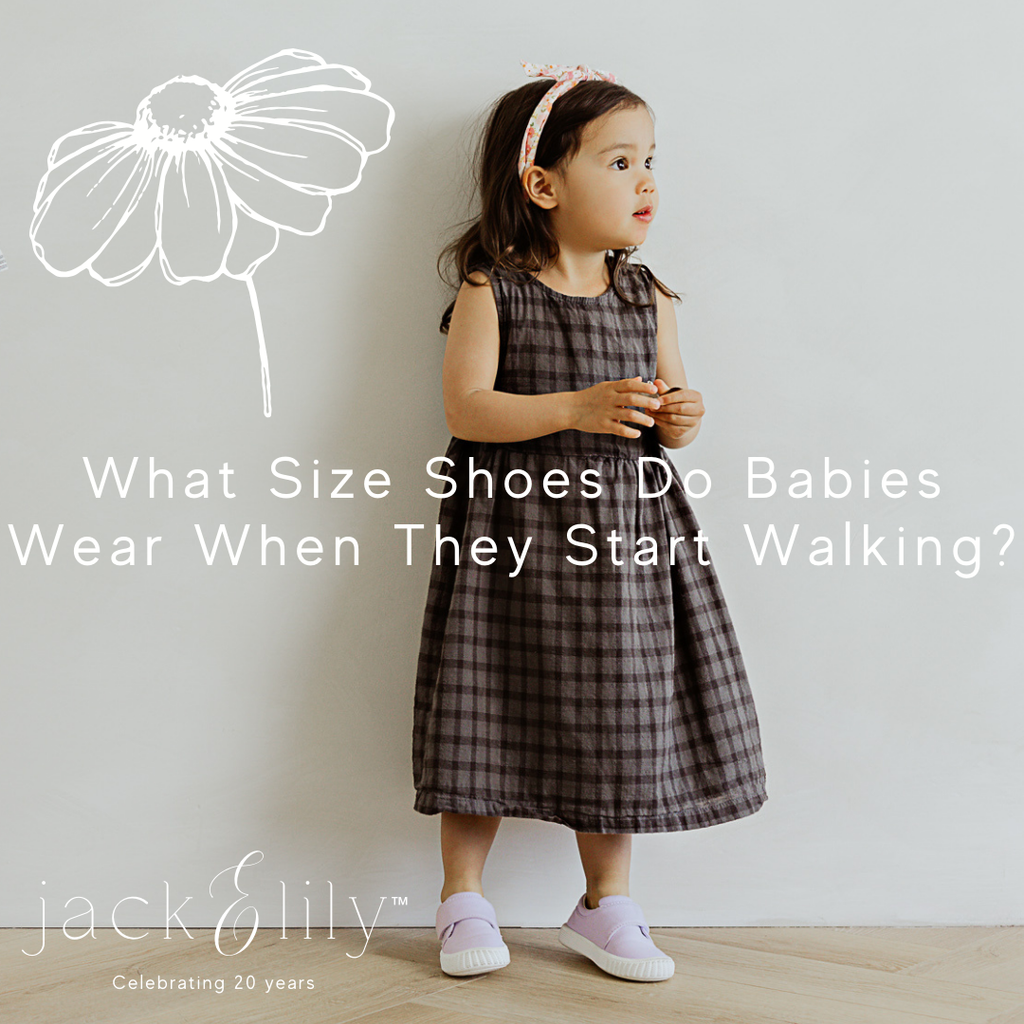It is an amazing moment when you catch your little one taking those first wobbly steps, their face alive with curiosity and excitement. And this happens usually when your baby is between 9 and 18 months. Their chubby feet start exploring the world around them with unbridled enthusiasm. While you are super happy about it, you also wonder should babies wear shoes when learning to walk. Well, the answer is more than a simple yes or no. This is because while your child’s tootsies need to develop, grow stronger, and become stable and coordinated, they also need protection. So, read on to know whether shoes are right for them at this stage and what you need to consider before buying a pair.
Before You Buy Baby First Walking Shoes
When your munchkin starts walking for the first time, they need to feel the surface beneath their feet and get familiar with the texture, hardness, temperature, and ups and downs. This will not only strengthen their bones and muscles, but also improve their gait and instill coordination and balancing skills. Hence, it is better for babies to move around barefoot while indoors.
However, when outdoors, they are likely to be exposed to too cold or hot surfaces, dust and dirt, sharp objects, and rough edges. And that is when your little one will need baby walking shoes. The pair you pick must be comfortable, supportive, and flexible though. The shoes should enable the natural movement of your baby’s feet and not hamper proper growth and development.
Before buying a pair, it is also a good idea to consult a pediatrician and podiatrist to find out what kind of shoes will be best for your tiny tot.
Tips to Buy the Right Pair of Walking Shoes
Now that you know the answer to ‘should babies wear shoes when learning to walk’, go through some important tips before zeroing in on an adorable pair.
- Get the Size Right: Baby shoe sizes vary across brands, so you need to check the size chart before making a decision. At Jack & Lily for instance, boots, sneakers, and T-straps come in sizes that correspond to the age range to help you decide quickly. And in case you want canvas kicks or slip-ons, a size 4 or 5 should do the trick. However, get your baby’s feet measured accurately beforehand, ideally by a podiatrist. Remember that extra tight shoes can hurt your little one’s feet, cause chafing, redness, blisters, or calluses. And if they are too loose, your munchkin might trip and fall.
- Consider the Bigger Foot: Generally, a baby’s feet are of two slightly different sizes. So, while choosing kids’ walking shoes, make sure the pair is suitable for the bigger foot.
- Ensure Ample Space for Toes: The shoes should have a wide toe box that allows your baby to wiggle their toes freely. Ensure a gap of 1 to 1.5 cm between the front of the shoe and the longest toe. Avoid pairs with tapered or pointed fronts as they can hamper the growth of your child’s feet.
- Check the Firmness of the Heel Cup: Choose shoes that offer the right amount of support to your little one’s heels and help them develop the correct gait and posture. So, pinch the back of the shoes and if it doesn’t move at all, the heel cups are too hard. On the other hand, if it collapses, the heel cups are too weak. Ideally, the heel cups should offer some resistance but be compressible.
- Assess the Flexibility of Soles: While the answer to should babies wear shoes when learning to walk is yes when outdoors, the pair must enable natural movement of the feet at all times. So, bend the shoes to check if they fold halfway. If so, their soles are highly flexible and will support the growth and development of your munchkin’s tootsies and instill essential motor skills.
- Choose a Safe Design: The shoes you pick must have thick enough soles that don’t allow hard or sharp objects to pierce through and hurt your baby’s feet. The outer soles must be of rubber and have adequate grooves to provide traction on smooth and slippery surfaces.
- Check the Weight: Opt for lightweight shoes that don’t burden those tiny feet when your child is busy exploring their surroundings. Heavy pairs can negatively impact growth too.
- Go for Healthy Materials: Materials like cotton, canvas, and soft leather are the best for toddler walking shoes. They are gentle, can bend and stretch easily, and are highly breathable. This means your baby’s feet won’t sweat and end up encouraging bacterial growth. They will also smell fresh and be kiss-ready round the clock.
- Consider Pull Loops and Velcro Straps: Those chubby little feet will change in shape as the days go by, which means you will need an adjustable pair for your baby. So, check for loops at the back of the shoes to help fit in your child’s heels easily. Consider designs with Velcro straps to loosen or tighten the fit as and when required. Laces are great options too as long as they are safe.
- Prioritize Quality Over Looks: When it comes to baby first walking shoes, always pay more attention to quality than looks. While these shoes come in a charming array of styles, colors, and patterns, durability, comfort, and support are of paramount importance. Plus, that way, the pair you pick will last long too.
Choose the Perfect Shoes for Your Baby’s First Steps
If you were wondering should babies wear shoes when learning to walk, your doubt must be gone by now. Moreover, you know what to keep in mind when picking a pair that is comfy, supportive, and safe, from size and materials to weight, soles, and more. Last but not the least, make your munchkin try on the shoes later in the day and not in the morning as their feet tend to swell over time with activity.
So, are you all set to start shopping? Check out the incredibly cute collection of baby walking shoes offered by Jack & Lily. Before selecting a pair, remember to check the sizing guide. If you need suggestions or advice, you can contact the professionals here too.


